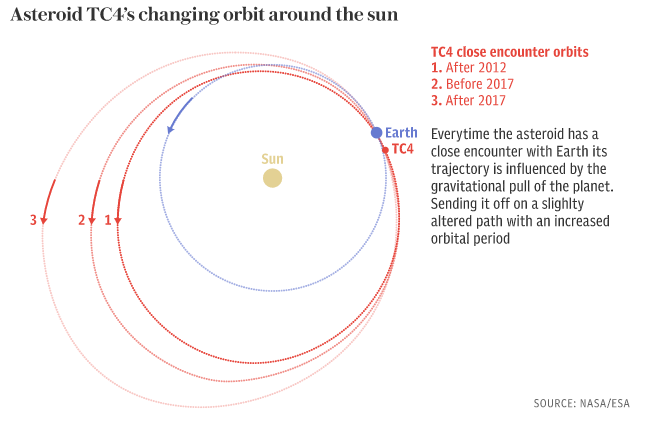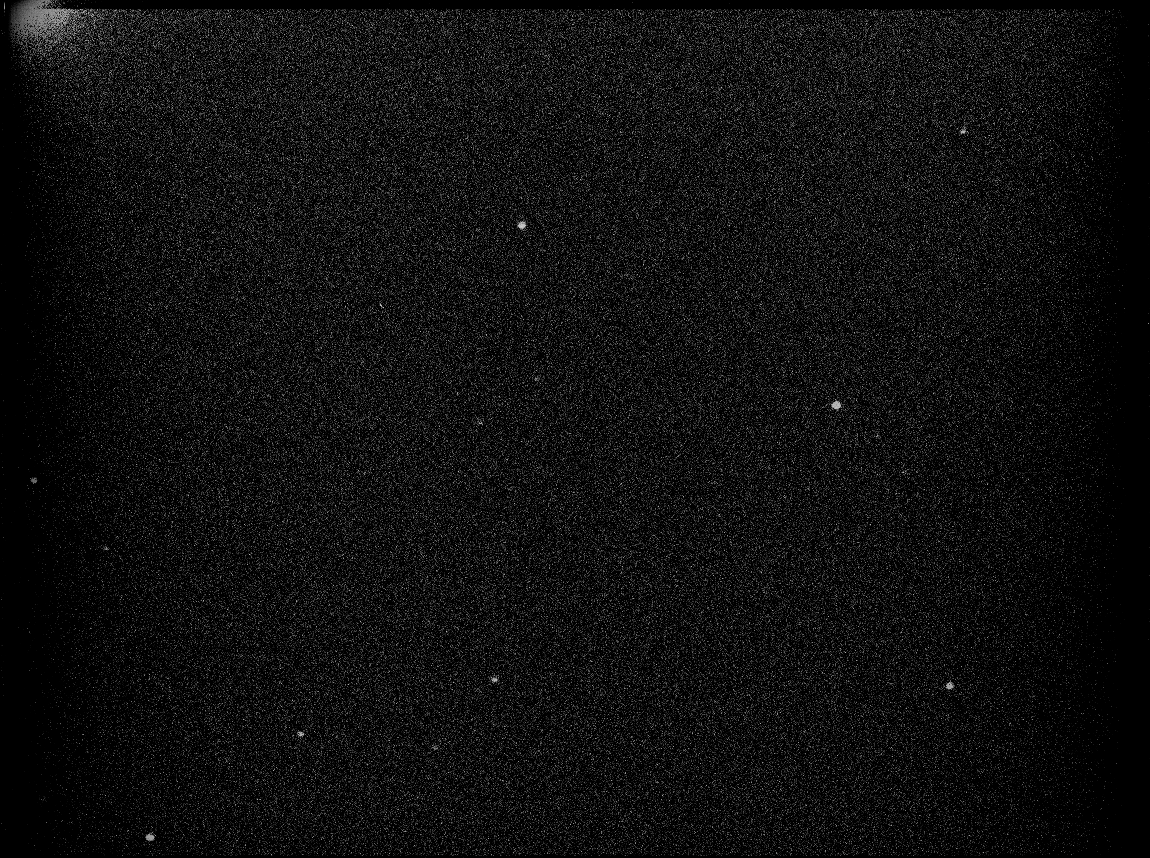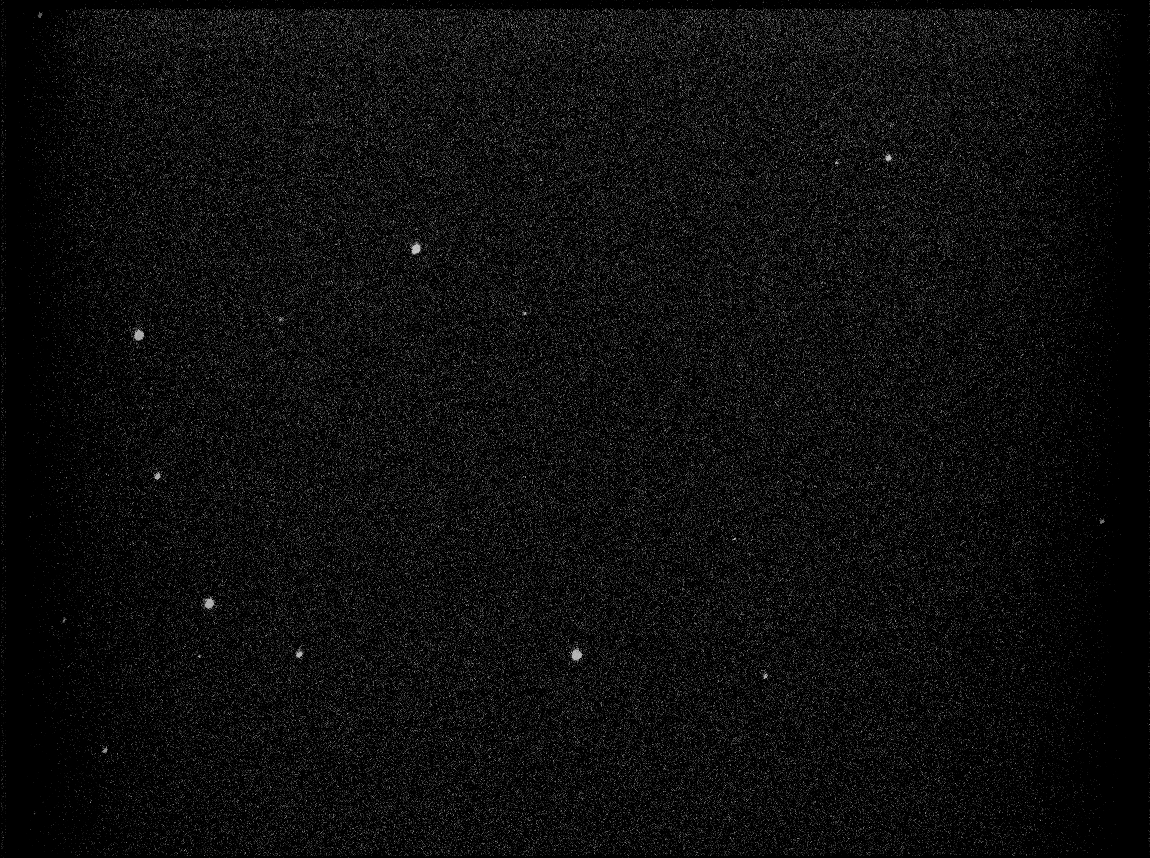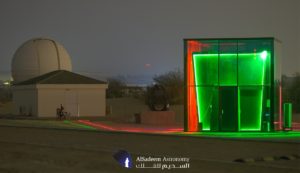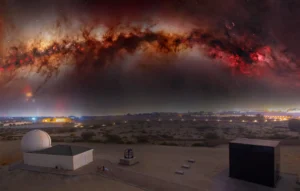On October 11-12, 2017, a tiny near-Earth object (NEO) swept very close to Earth. Designated with the name 2012 TC4, this 15-30 meter wide asteroid (comparable to the 2013 Chelyabinsk meteor) flew by nearEarth at around 11% the Earth-Moon distance. Specifically, it made its close encounter with Earth at about 44,000 kilometers above Antarctica at 9:42AM, UAE Local Time. Fortunately, it did not hit Earth thanks to its gravity deflecting the asteroid’s trajectory away from Earth around its orbit.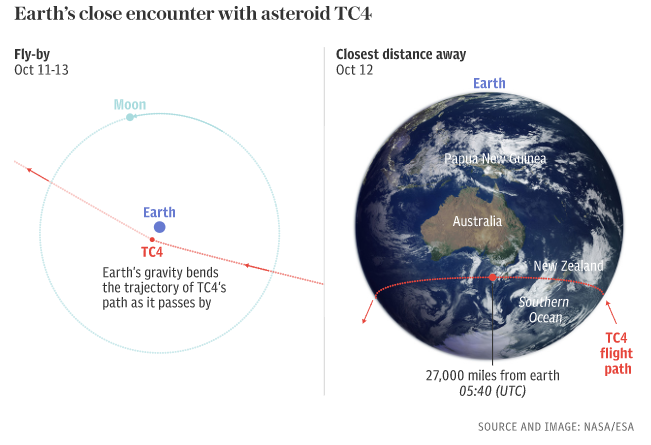
Image Credit: NASA/ESA, The Telegraph
This potentially hazardous asteroid (PHA) was discovered on October 4, 2012 by the Panoramic Survey Telescope & Rapid Response System (PanSTARRS) at the Haleakala Observatory in Maui, Hawaii. After its discovery, it was tracked and monitored for only seven days before disappearing from Earth-view, making it quite difficult for astronomers in the Minor Planet Center (MPC) and the Center for Near Earth Object Studies (CNEOS) at NASA’s Jet Propulsion Laboratory (JPL) to determine its precise orbit until it reappeared 5 years later. Observational data from this close asteroid flyby will be utilized by these institutions for developing their planetary defense system projects, including the International Asteroid Warning Network, in response to any possible asteroid impact threats to Earth.
Here are animated simulations of the close asteroid fly-by taken from Al Sadeem Observatory on the late evening of October 11, 2017. The first consists of an image sequence of 5-second exposure and the second of 1-second exposure. The asteroid will appear as a trail of light across frames over a background of stars.


